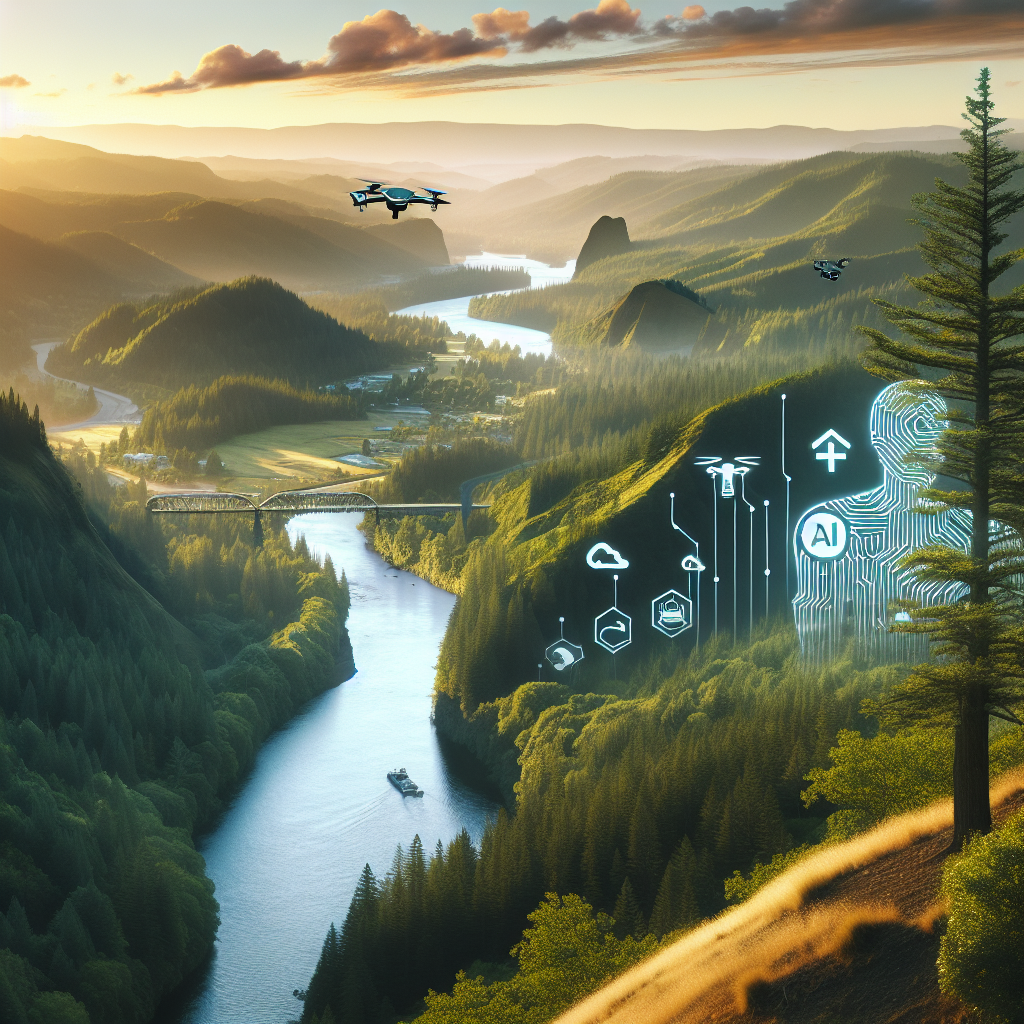Introduction: The Connection between AI and the Great Outdoors
In Oregon, we’re known for a few things: extraordinary coffee, lush pine forests, and the breathtaking beauty of Crater Lake. But soon, our beloved state may also become famous for its pioneering role in environmental conservation through the novel use of artificial intelligence (AI) technology.
Oregon: A Glorious, Green Living Laboratory
Oregon, with its diverse landscapes from the wind-whipped coastline of Cannon Beach to the high desert plains of Eastern Oregon, offers the perfect living laboratory for environmental monitoring. We arguably have some of the cleanest air in the country and, thanks to the statewide Bottle Bill recycling program, we’re serious about preserving this authenticity.
Take a drive on the Historic Columbia River Highway and in less than an hour, you go from the urban sophistication of Portland, with Powell’s City of Books and Voodoo Doughnut, to the serene beauty of the Columbia River Gorge. This kind of diversity, combined with a tech-savvy population and strong support for conservation initiatives, makes Oregon an obvious player in the game-changing confluence of AI and environmental monitoring.
AI’s Role in Capturing the Heartbeat of Oregon’s Nature

Deep amongst the trails of the Tillamook State Forest or in the mushroom-laden undergrowth of Mount Ashland, AI technology is being employed to collect vast amounts of data – data about our forests, rivers, wildlife, and more. By creating algorithms that are able to identify specific bird songs or track the migration patterns of Roosevelt elk, scientists are gaining an intricate understanding of our unique ecosystem.
If you’ve ever had the pleasure of a twilight stroll around Mirror Pond in Bend, you know the sheer amount of wildlife present. AI is helping conservationists track these species and interpret their behaviors, allowing us to respond before a species reaches the critical endangered list.
Our Local Tech-Stars Rising to the Challenge
It’s not all just wishful thinking. Oregon companies are stepping up to make this a reality; they recognize that the Beaver State is just too precious to lose, and have rolled out ingenious applications of AI.
Consider companies like Bright.md or AWS Elemental, they might be better known for their healthcare IT or video processing tech, but their cutting-edge AI work is aiding local environmental conservation projects too. And let’s not forget about Intel’s role, their long-standing presence in Hillsboro has put Oregon on the global tech map and they are playing their part in this new convergence of AI and environmental conservation.
A Future Written in Code and Carved by Mountains
From the tech gurus coding away in Silicon Forest, to the farmers in Willamette Valley who work in tandem with the rhythm of the seasons, we Oregonians are a resilient bunch. Adapting, innovating, protecting – that’s just our way of life.
And rightly so. In a world increasingly threatened by climate change, the survival of our cherished Oneonta Gorge falls or the verdant vineyards sprawling through Dundee Hills may depend on our ability to utilize advanced tools like AI for conservation.
Oregon is standing at the precipice of a new era, an era where technology and nature are not at odds, but exist in harmony to ensure a future that’s sustainable, green, and as breathtakingly beautiful as a sunrise over Mount Hood.
Conclusion: Oregon, defining the Future of Conservation
So, lace-up your hiking boots and grab your reusable water bottle, because Oregon’s natural wonderland is calling. From the misty shores of Astoria to the sun-soaked cliffs of Smith Rock, these iconic landscapes are writing a new chapter in the annals of environmental conservation.
It’s a chapter where bald eagles soar above forests closely monitored by AI, where salmon surge upstream in rivers watched over by powerful algorithms, and where technology doesn’t mean strip malls and skyscrapers, but represents a beacon of hope in conservation.
Welcome to the future of proof-in-the-pudding environmental protection, folks. Welcome to Oregon – where we don’t just talk about conservation, we’re coding it into reality. Let’s get out there and admire the handiwork of nature, the dedication of our local tech wizards, and realize we’re standing amidst a revolutionary shift, where AI and environmental monitoring are the new frontiers in conservation’s promising saga.
